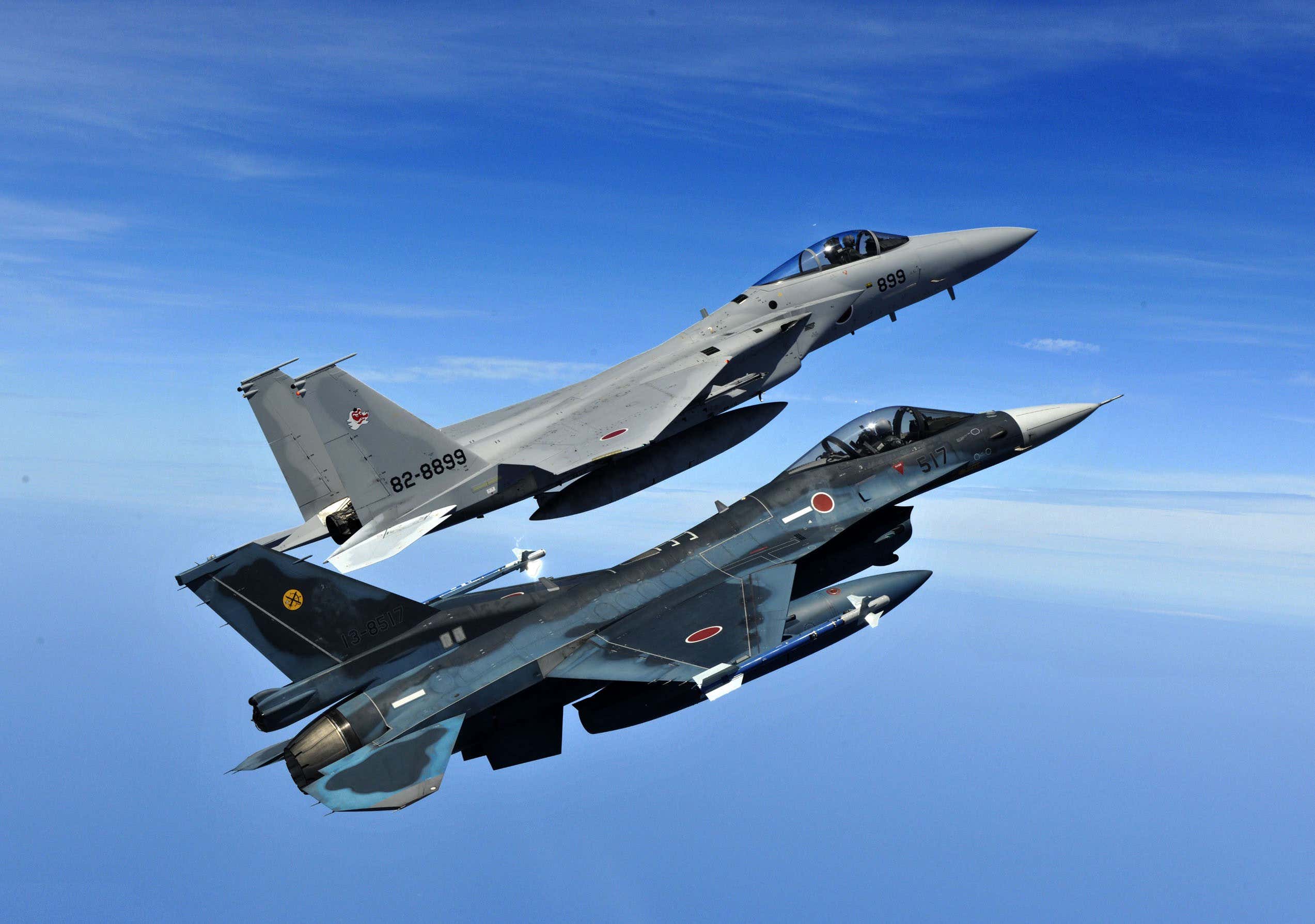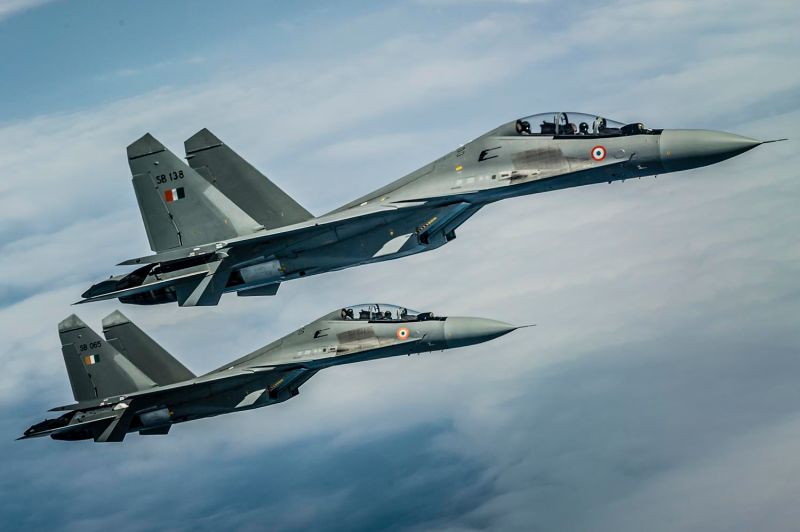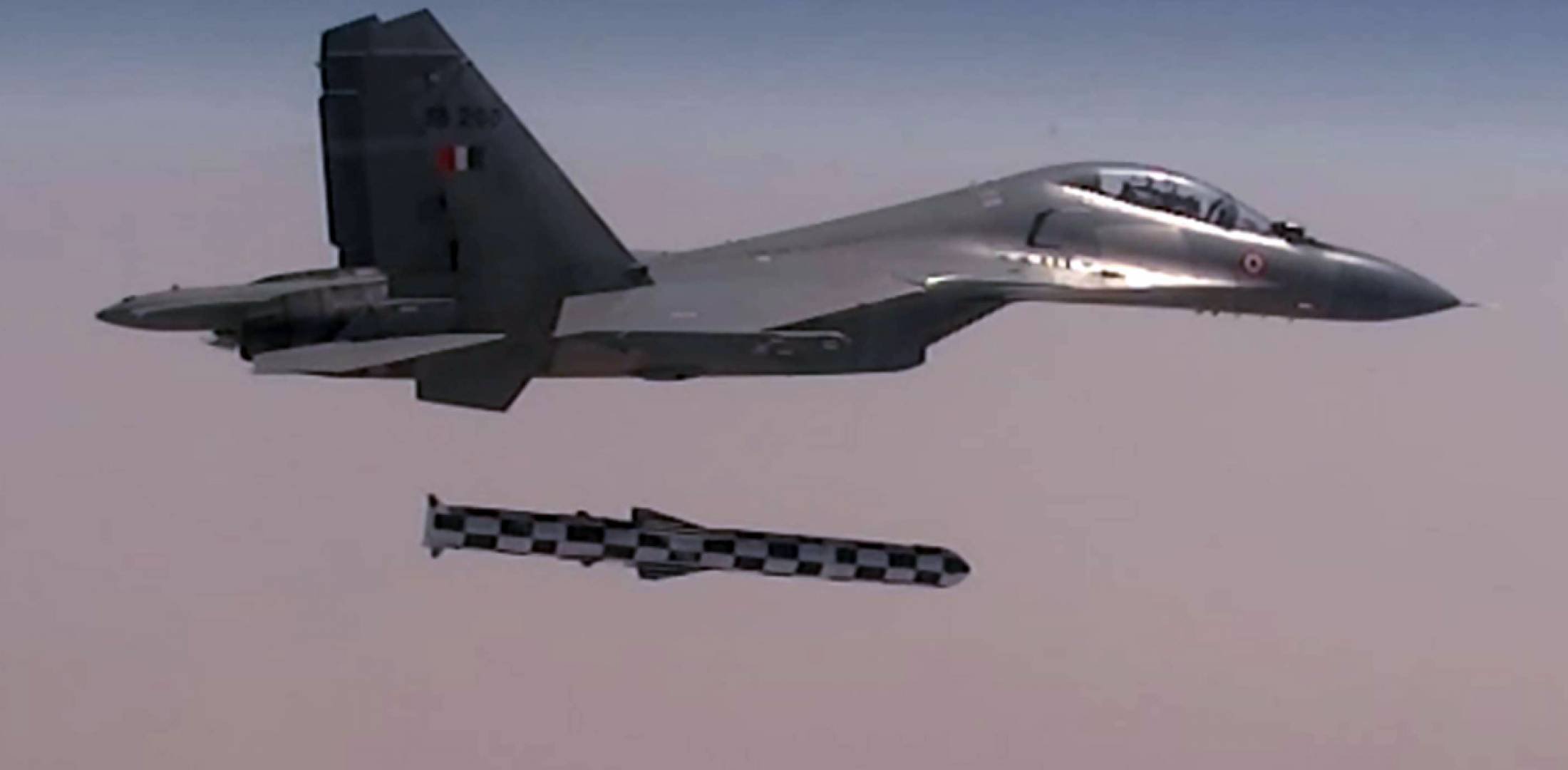US’ Boeing F-15 and Russian Sukhoi Su-30, along with their variants, are some of the most powerful fighter aircraft in the world. Who will dominate the skies when these two heavy-duty jets — Japanese F-15J and Indian Su-30MKI — indulge in a dogfight, which is expected later this year?
Unnerved By Chinese Military Tech, US Air Force Moots Turning Its ‘Flying Mammoth’ Into Hypersonic Missile Platform
Tempest – UK’s Sixth-Gen Fighter Jet Program Tempts Japan To Join In; London Set To Sign Contract With Key Partners
F-15 Vs Su-30MKI
The F-15 Eagle is a double engine, multi-role strike fighter aircraft. It is a two-seat, supersonic, long-range, all-weather air superiority fighter that comes equipped with two Pratt & Whitney F100-PW-100 turbofan engines with variable after-burning thrust.
The warplane has a shoulder-mounted swept wing that was designed primarily for transonic maneuverability. It has a total wingspan of around 13 meters.
The Eagle made its first flight in 1972 before its official induction in 1976, after which it was exported to Israel, Japan, and Saudi Arabia. Israel’s long connection with the heavy-duty jets began in 1976, with the twin-engine fighter proving to be a dominant air-to-air fighter.

The Su-30 or the Indian MKI version is also a multi-role, air superiority aircraft equipped with a twin-engine. The warplane is a twin-seater, capable of being utilized as an interceptor, bomber as well as a trainer simultaneously.
It is powered by two Lyulka AL-31FP after-burning turbofan engines. The comparatively larger Su-30 has a wingspan of 14.7m. The Indian variant of the Su-30 has undergone additional modifications to match the needs of the Indian Air Force (IAF).

In terms of maximum speed, the F-15 Eagle has an edge. It has a top speed that is slightly above Mach 2.5, while the Su-30 MKI is capable of a top speed of Mach 2. The former’s range of 3,900 km also exceeds the 3,000 km range of the latter.
The Sukhoi jet has 12 hardpoints, the same as the number of hardpoints on the Eagle. Both the aircraft are capable of carrying a wide variety of armaments.
A Formidable Rival Of F-35 Stealth Fighter Jets, Saab Gripen’s ‘One Big Drawback’ Impeding Its Sales
The Eagle can carry up to four Lockheed Martin / Raytheon AIM-9LM infrared-guided Sidewinder air-to-air missiles, up to four Raytheon AIM-7F/M radar-guided Sparrow air-to-air missiles, or eight Raytheon AMRAAM radar-guided, medium-range air-to-air missiles. There is a very wide variety of bombs that the plane can utilize as well.

In comparison, the Su-30 MKI can launch a range of missiles including Kh-29L/T/TYe, Kh-31A/P, Kh-59M, and Nirbhay. The IAF’s fleet of Su-30s has also been equipped with an air-launched version of BrahMos supersonic cruise missiles.
Additionally, the aircraft can carry Vympel-made R-27R, R-73, and R-77 air-to-air missiles in addition to rocket pods, KAB-500, and KAB-1500 laser-guided bombs.
Although both the aircraft seem equally capable, who would dominate a dogfight is a question that could be answered, probably later this year or early next year.
Boeing Pitching F-15EX To India
While the much-awaited ‘aerial duel’ would be keenly awaited, the Indian Air Force has also been offered F-15EX jets (the most advanced versions of the F-15 series) under informally titled MMRCA 2.0 tender.
Gone ‘Berserk’ In 2016, US Navy Awards Lockheed Martin Contract To Produce Trident II Sub-Launched Ballistic Missiles
Boeing, which has been displaying a growing interest in the Indian market, is fielding its F-18 Super Hornets besides F-15EX fighters in the competition. Various other warplanes — the Russian MiG-35 and Su-35, Swedish Saab Gripen, French Dassault Rafale, Eurofighter Typhoon, and US’ Lockheed Martin’s F-21 are also in the fray.

Although India has had drills with the F-15 and some of its variants earlier, greater exposure to a warplane that is a frontrunner for its multi-billion-dollar tender is something that both defense enthusiasts and experts would be awaiting.
Tokyo’s keen interest to dogfight and train with Indian Su-30 MKIs, as EurAsian Times had previously reported, is largely attributable to the Chinese threat lumbering around in close proximity to the Japanese archipelago.
PLA Catching-Up! Why China’s J-16D EW Aircraft Presents ‘Big Challenge’ To India, Taiwan & Even The USA
Japan and India have held multiple defense exercises before, however, a drill using fighter jets is yet to happen between the two Asian allies. This would be Japan’s first time training with an aircraft of Russian design — something Japan is keenly awaiting since China also operates Su-30 fighter and a variety of other Russian-origin jets.
Japanese newspaper Sankei Shimbun revealed the two countries had initially planned to hold drills in July this year, but the idea had to be dropped due to the second wave of COVID-19 in India.
Experts say drills with the Indian jets will dramatically help Japan become familiar with the Su-30 family and learn Chinese capabilities that include knowledge of its maneuverability, cruising range, fuel consumption, and turnaround times for maintenance.
The Symbolic Value
Japan and India are both wary of China’s military power and its attempt to achieve greater dominance in the region.
China has had skirmishes with India along the disputed Line of Actual Control (LAC) in the Himalayas while Japan is at odds with the communist nation over its contested claim on the Tokyo-controlled Senkaku Islands in the South China Sea.

Delhi and Tokyo conducting drills serve as a rather ominous signal to Beijing that its rivals India and Japan are emboldening their defense ties. In fact, the symbolic value of the Indo-Japanese aerial exercises might just go beyond the conventional structure of military benefits.
Along with their bilateral cooperation, India and Japan are also a part of the Quadrilateral Security Dialogue (the Quad) that includes the US and Australia as well. It is no secret that Quad is actually an informal security alliance whose objective is to contain what is seen as the “China threat”.
The message of rising regional and intra-regional cooperation against potential hegemony in the area is bound to be amplified with this particular drill involving the Su-30 MKI and the F-15 jets.
- Nitin holds a double master’s degree in Journalism and Business Management (MBA) from The University of Glasgow, UK. He has over 15 years of global experience in Marketing & Communications, Journalism, and Digital Marketing and widely worked & traveled across Europe, the Americas and Asia. CONTACT: Nytten@gmail.com
- With Inputs From Shreya Mundhra/EurAsian Times Desk
- Follow EurAsian Times on Google News




